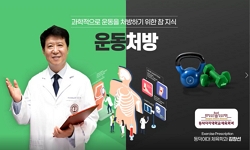Dysphagia refers to all types of anomaly that may occur at all courses of oral cavity, pharyngeal cavity, and esophageal cavity by ingestion of food material. Dysphagia may range from light issues such as delay in meal times, discomfort, and coughing ...
http://chineseinput.net/에서 pinyin(병음)방식으로 중국어를 변환할 수 있습니다.
변환된 중국어를 복사하여 사용하시면 됩니다.
- 中文 을 입력하시려면 zhongwen을 입력하시고 space를누르시면됩니다.
- 北京 을 입력하시려면 beijing을 입력하시고 space를 누르시면 됩니다.
부가정보
다국어 초록 (Multilingual Abstract)
Dysphagia refers to all types of anomaly that may occur at all courses of oral cavity, pharyngeal cavity, and esophageal cavity by ingestion of food material. Dysphagia may range from light issues such as delay in meal times, discomfort, and coughing when eating to more serious issues such as malnutrition, dehydration, and aspiration pneumonia, even leading to fatality and thus requires great caution. Therefore the diet provided to dysphagia patients requires extra caution, and efforts should be made to supply an appropriate amount. In order to provide food to dysphagia patients, the viscosity is controlled typically based on the videofluroscopic swallowing test. In order to prescribe the dysphagia diet, it would be necessary to accurately evaluate the deglutition function of the patient, understand the natural progress of basic disorder which led to dysphagia, and provide food of appropriate viscosity and texture. Also, a unified guideline must be prepared for the diet used in videofluroscopic swallowing study, the diet provided to actual patients, and the commercialized deglutition assisting additives to provide safe diet to the patients. Therefore, this report shall examine the points to consider when prescribing dysphagia diet to dysphagia patients and the commonly encountered issues when making such prescription. (JKDS 2011;1:80-84)
참고문헌 (Reference)
1 Perlman AL, "Videofluoroscopic predictors of aspiration in patients with oropharyngeal dysphagia" 9 : 90-95, 1994
2 Fremont K, "Unlocking the mystery of dysphagia diets" 22-24, 2009
3 Elmstahl S, "Treatment of dysphagia improves nutritional conditions in stroke patients" 14 : 61-66, 1999
4 Smithard DG, "The natural history of dysphagia following a stroke" 12 : 188-193, 1997
5 The National Dysphagia Diet Task Force, "The National Diet Dysphagia Diet: standardization for optimal care" American Dietetic Association 2002
6 Mann G, "Swallowing function after stroke: prognosis and prognostic factors at 6 months" 30 : 744-748, 1999
7 Steinhagen V, "Swallowing disturbance pattern relates to brain lesion location in acute stroke patients" 40 : 1903-1906, 2009
8 Logemann JA, "Swallowing disorders in the first year after radiation and chemoradiation" 30 : 148-158, 2008
9 Mann G, "Swallowing disorders following acute stroke: prevalence and diagnostic accuracy" 10 : 380-386, 2000
10 Pauloski BR, "Swallow function and perception of dysphagia in patients with head and neck cancer" 24 : 555-565, 2002
1 Perlman AL, "Videofluoroscopic predictors of aspiration in patients with oropharyngeal dysphagia" 9 : 90-95, 1994
2 Fremont K, "Unlocking the mystery of dysphagia diets" 22-24, 2009
3 Elmstahl S, "Treatment of dysphagia improves nutritional conditions in stroke patients" 14 : 61-66, 1999
4 Smithard DG, "The natural history of dysphagia following a stroke" 12 : 188-193, 1997
5 The National Dysphagia Diet Task Force, "The National Diet Dysphagia Diet: standardization for optimal care" American Dietetic Association 2002
6 Mann G, "Swallowing function after stroke: prognosis and prognostic factors at 6 months" 30 : 744-748, 1999
7 Steinhagen V, "Swallowing disturbance pattern relates to brain lesion location in acute stroke patients" 40 : 1903-1906, 2009
8 Logemann JA, "Swallowing disorders in the first year after radiation and chemoradiation" 30 : 148-158, 2008
9 Mann G, "Swallowing disorders following acute stroke: prevalence and diagnostic accuracy" 10 : 380-386, 2000
10 Pauloski BR, "Swallow function and perception of dysphagia in patients with head and neck cancer" 24 : 555-565, 2002
11 van der Maarel-Wierink CD, "Risk factors for aspiration pneumonia in frail older people: a systematic literature review" 12 : 344-354, 2011
12 Niedert KC, "Position of the American Dietetic Association:Liberalization of the diet prescription improves quality of life for older adults in long-term care" 105 : 1955-1965, 2005
13 Wolfe CD, "Patterns of acute stroke care in three districts of southern England" 47 : 144-148, 1993
14 Yamamura K, "Neural mechanisms of swallowing and effects of taste and other stimuli on swallow initiation" 33 : 1786-1790, 2010
15 Logemann JA, "Manual for the videofluorographic study of swallowing" Pro-Ed 1993
16 Higo R, "Longitudinal analysis of progression of dysphagia in amyotrophic lateral sclerosis" 31 : 247-254, 2004
17 Choi KH, "Kinematic analysis of dysphagia: significant parameters of aspiration related to bolus viscosity" 2011
18 CMS, "Interpretive Guideline for F325"
19 Strowd L, "Dysphagia dietary guidelines and the rheology of nutritional feeds and barium test feeds" 133 : 1397-1401, 2008
20 Carnaby G, "Behavioural intervention for dysphagia in acute stroke: a randomised controlled trial" 5 : 31-37, 2006
동일학술지(권/호) 다른 논문
-
- 대한연하장애학회
- 김윤
- 2011
-
우리나라 입원환자의 영양상태 -연하곤란 위험 환자군을 중심으로
- 대한연하장애학회
- 이호선
- 2011
-
- 대한연하장애학회
- 김상균
- 2011
-
- 대한연하장애학회
- 김정환
- 2011




 KCI
KCI









